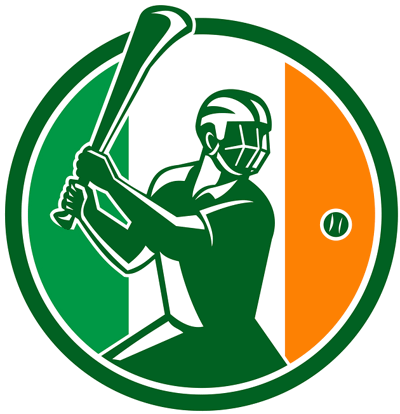 Most sports seem like ones that you could pick up after a short-time watching, with the rules and manner of play in football, tennis and golf, for example, all being simple enough. That is not quite the case with hurling, which can seem like an impenetrable mass of confusion to those that have never heard of the game before.
Most sports seem like ones that you could pick up after a short-time watching, with the rules and manner of play in football, tennis and golf, for example, all being simple enough. That is not quite the case with hurling, which can seem like an impenetrable mass of confusion to those that have never heard of the game before.
A game that is native to Ireland and one of the country’s Gaelic games, hurling is linked in many ways to another sport covered on these pages, Gaelic football.
The two sports are played on the same field and boast the same goals, also matching up when it comes to the number of players in the teams and even a lot of the terminology used when discussing them.
There are also links to the Scottish sport of shinty. In hurling the players use hurls to hit a ball, known as a sliotar, into the opposition team’s goal. It is a physical game, with players getting no more protection than the plastic helmet that covers the head and has a face guard.
Best Bookie For Hurling Betting
Quinnbet

The best way to bet on Irish sports is with a bookie that heralds from the country, they don’t come much better than Quinnbet.
Quinnbet have a comprehensive range of markets with more depth and coverage than any UK bookie. They are also one of the only sites where you can get offers, promotions and enhanced lines for Hurling. They also have stats, results, news and more.
You could also look at other Irish bookies who will have plenty of lines and often decent promotions.
How To Bet On Hurling
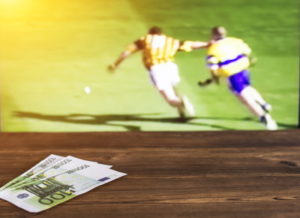 Hurling is typically an immensely competitive sport, with free-flowing and high-scoring games usual. That can make it a tricky sport to bet on, though the following types of bets are what you’ll want to consider:
Hurling is typically an immensely competitive sport, with free-flowing and high-scoring games usual. That can make it a tricky sport to bet on, though the following types of bets are what you’ll want to consider:
- Outrights – Which team do you think will win a given tournament? This is the equivalent of betting on the winner of Wimbledon or the World Cup
- Match Betting – Bet on whether you think the home team or the away team will win or whether the match will end in a draw. Usually this is denoted as 1X2 betting, with 1 being the home team, X the draw and 2 the away side
- Handicap Betting – If you think one team is a runaway favourite then you can give them a handicap of, say, -4 points ahead of the game. This will give you better value that a straight match win
- Winning Margin – How many points will the winning team win by is the question you need an answer two, betting on the margin of victory here
- 1st Goal & Result – This is a bet on which team will score the 1st goal and what the result of the mach will be
Obviously that’s not an exhaustive list of bet types, but they’re the most popular ones you’ll want to consider.
The History Of Hurling
Origins
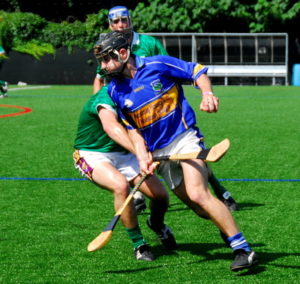 When it comes to discussing the origins of hurling it is important to differentiate between any generic bat and ball game and the sport that we know of today.
When it comes to discussing the origins of hurling it is important to differentiate between any generic bat and ball game and the sport that we know of today.
Some believe that hurling is older than the history of Ireland itself, dating back to the time before Christianity came to be and was brought to the island by the Celts more than 2,000 years ago. The one thing that we can say with any sense of definitiveness is that there are references to the sport in early Irish law, which is known as Brehon law, that date back to the 5th century.
In a book imaginatively entitled ‘A History of Hurling’, Seamus King references stories passed down the generations about hurling that date back as far as 1200 BCE and talk of the sport being played in County Meath.
The Seanchás Mór is a commentary on the Brehon law and describes how the son of a king was allowed to have his hurley stick dipped in bronze, whilst lesser men were only allowed to have theirs dipped in copper. The main point being that it is a sport that dates back thousands of years, the exact origins of which have as much to do with folklore as reality.
The Game’s Origins Take Shape
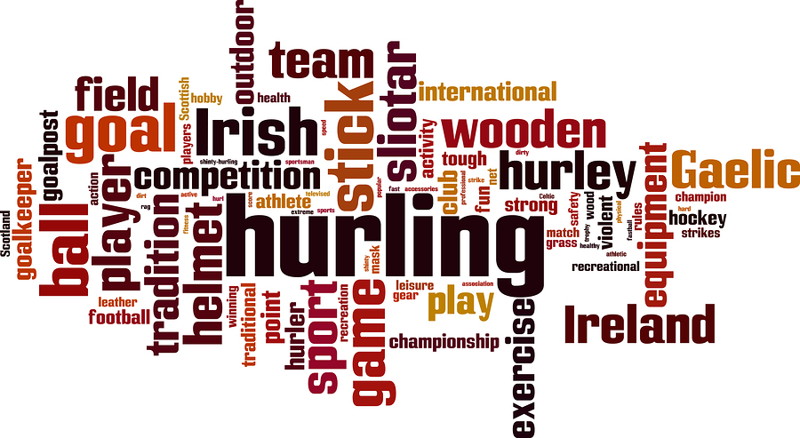
A statute for the county town of Kilkenny from the 13th century makes clear that hurling is forbidden in the town, primarily because of the violence inherent in the sport. It recommends that the English settlers might wish to consider fencing or archery instead, should they wish to repel the Gaelic clans from attacking them.
In the 16th century a statue for Galway City states that residents were ‘at no time to use ne occupy ye hurling of ye litill balle with the hookie sticks or staves’. Rather it recommended the ‘great foot balle’ to be played.
The majority of the earliest reports of hurling make reference to how it shouldn’t be played or how it was outlawed, with the first description of the actual game itself not coming until the 17th century. That was when an English visitor to Ireland named John Dunton make a comparison between it and the English game called Pall-mall.
He talked of a sport that involved balls being created out of animal hair and carried on a stick or hit with it, moving the ball towards a hoop at the opposite end of the pitch that the game was being played on. Teams would be made up of between 10 and 20 players and the first to get the animal hair ball into the opposition’s hoop won.
Ireland’s Two Stick & Ball Games
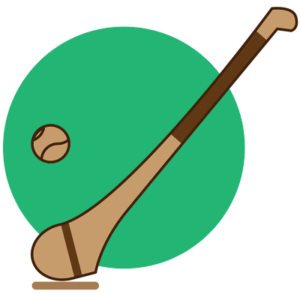 By the 18th century Ireland boasted two different games that used a stick and ball and were similar to each other in nature. The first was mostly played in the North of the country and was played by commoners, hence its name of camán. This used a hard ball made of wood and a thin stick, with payers not allowed to handle the ball during play. It was more like the sport of shinty than hurling.
By the 18th century Ireland boasted two different games that used a stick and ball and were similar to each other in nature. The first was mostly played in the North of the country and was played by commoners, hence its name of camán. This used a hard ball made of wood and a thin stick, with payers not allowed to handle the ball during play. It was more like the sport of shinty than hurling.
In the Southern part of the country, meanwhile, landlords organised games known as iomán or báire, creating teams of around 21 players to take on teams created by other landlords and competing over wages.
The Northern game was typically played in the winter whilst the Southern one was a summer one, usually played during fairs or other moments of entertainment. The Southern game was a popular sport, often drawing crowds of 10,000 or more to watch. Because the area was blessed with many ash trees that became the favoured wood with which to make a hurley.
This was the game that would form the basis for modern-day hurling and the 18th century is referred to by many as the ‘Golden Age’ of the sport. It’s probably fairer to describe it as the sport’s more formative years, given that the sport that is played today hadn’t even had its rules solidified at that point.
The start of the 19th century saw major social and political change in Ireland, not least of all because of the Great Famine and the 1801 Act of the Union. These changes meant that playing sports was no longer something that was seen as important and both the Northern and Southern forms of the game died out as a result. Only in small pockets in places like Wexford, County Galway and Cork did the sport survive.
The Game Is Formalised
 The more that the game of Southern Ireland was played the more that there was a desire to formalise the rules that were played. An attempt was made in the wake of the formation of the Irish Hurling Union by students at Trinity College in Dublin in 1879.
The more that the game of Southern Ireland was played the more that there was a desire to formalise the rules that were played. An attempt was made in the wake of the formation of the Irish Hurling Union by students at Trinity College in Dublin in 1879.
They had a specific aim, which was to come up with a set of rules that could be used by all clubs, with the hope that it would ‘foster that manly and noble game of hurling in this, its native country’. Though it didn’t work in practice, it did make clear the need for standardised rules that could be used by hurling players throughout Ireland.
In 1884 the Gaelic Athletic Association was created with the specific aim of promoting sports that were traditional to Ireland. The GAA’s founder, Michael Cusack, wanted to write down the rules of the game that he’d played in County Clare when he was a child, simplifying them to make them easier for others to understand.
That game was, of course, iomán, which was more like hurling than the game of camán played in the North. He wanted to promote the new sport in order to give people a sense of pride in Irish nationalism, creating the Celtic Times to help him with that.
The All-Ireland Hurling Championship
 The work done by Cusack saw hurling slowly start to make its way into the mainstream in Ireland, with the The All-Ireland Hurling Championship founded in 1887 It came on the back of county committees for the game being formed and inter-club contests taking place throughout both 1885 and 1886.
The work done by Cusack saw hurling slowly start to make its way into the mainstream in Ireland, with the The All-Ireland Hurling Championship founded in 1887 It came on the back of county committees for the game being formed and inter-club contests taking place throughout both 1885 and 1886.
Teams were willing to travel the country for a game, leading the newspapers to question which was the best in the country. The obvious solution was to create a tournament that could answer that very question.
Another reason for the GAA’s determination to start a championship was that not all of the hurling clubs in Ireland had joined the association. They had seen in England the influence of the FA Cup in seeing clubs join the Football Association and decided that something similar would be good for them, making the championship one that was open to any affiliated club.
Matches were initially organised at the county level, with the victors in the various county championships progressing to take part in the All-Ireland series. The sport was dominated by Kilkenny, Cork and Tipperary in the early part of the 20th century.
Playing Hurling
The Pitch
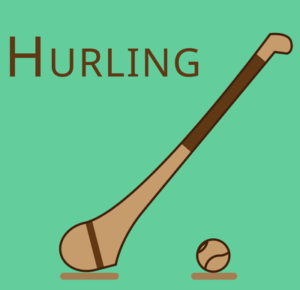 Fans of rugby might feel as though they’d seen a hurling pitch before, with the ground that the sport is played on boasting similarities to the English sport. It is rectangular and typically measure between 130 and 145 metres in length and 80 to 90 metres in width.
Fans of rugby might feel as though they’d seen a hurling pitch before, with the ground that the sport is played on boasting similarities to the English sport. It is rectangular and typically measure between 130 and 145 metres in length and 80 to 90 metres in width.
At both ends of the grass pitch you’ll find goals that are shaped like an H, thanks to the lower part that looks akin to a football goal and with posts coming out the top of it similar to those used in rugby.
The posts are 6.5 metres away from each other and climb around 6 or 7 metres up, inked by the crossbar that is 2.5 metres from the ground. It is the same goal that is used in Gaelic football matches, complete with a net on the lower half. Elsewhere on the pitch there are lines marked out 14, 21 and 65 yards from the end of the pitch, with a smaller and larger rectangle surrounding the goal.
The Teams
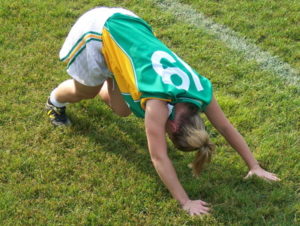 Hurling teams feature 15 players on each, which are made up of the following positions:
Hurling teams feature 15 players on each, which are made up of the following positions:
- Goalkeeper
- 3 full-backs
- 3 half-backs
- 2 midfielders
- 3 half-forwards
- 3 full-forwards
The squad usually contains between 24 and 30 players, though only 5 substitutions are allowed per game. In modern times an additional substitution has been allowed in cases where blood has been spilled by a player on the pitch.
The Equipment
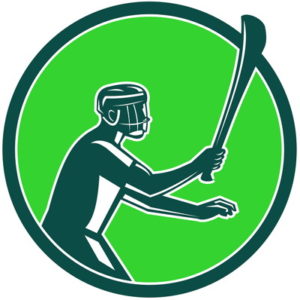 There are 2 main pieces of equipment used in hurling, with the first being the hurley itself. Typically made of ash wood, the stick used by players is typically between 24 to 36 inches long and has a bulbous end. Hurleys used by goalkeepers have a bulbous end, which is known as the bas, twice the size of the other players.
There are 2 main pieces of equipment used in hurling, with the first being the hurley itself. Typically made of ash wood, the stick used by players is typically between 24 to 36 inches long and has a bulbous end. Hurleys used by goalkeepers have a bulbous end, which is known as the bas, twice the size of the other players.
The ball used in in hurling maintains the name of the earlier form of the game played in the South of Ireland and is known as a sliotar. It is somewhere between 69 and 72 millimetres in diameter, weighing between 110 and 120 grams. It has a cork interior and a leather exterior, boasting the ability to travel at speeds in excess of 90 miles per hour when hit well.
The speed that the ball travels at is part of the reason that a rule change was introduced in 2010 to mean that all players must wear a helmet with a face guard. The rule applies to all levels of the game and was a decision taken by the GAA in the hope of reducing the number of injuries suffered by hurlers.
Scoring
In hurling players can score a single point by getting the ball between the two upright posts of the opposition’s goal, earning 3 points if they score a goal by getting it into the net in the lower half that is covered by the net.
There are denoted by a white flag for 1 point and a green flag for 3 points.
Tackling & Officials
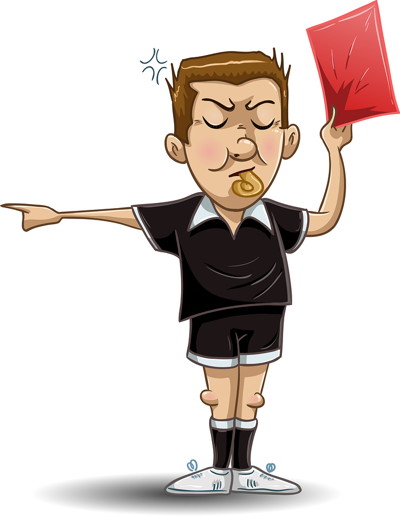 Hurling is a physical game, with players able to tackle using their sticks as long as they don’t strike with the hurley. Accepted tackling forms include blocking, hooking and side-pulling.
Hurling is a physical game, with players able to tackle using their sticks as long as they don’t strike with the hurley. Accepted tackling forms include blocking, hooking and side-pulling.
Referees are in charge of re-starting games and of maintaining discipline, issue yellow cards and red cards as they see fit. They are assisted by 2 linesmen, 2 umpires at each end of the pitch and sideline officials at inter-county games.
Referees will award technical fouls if any of the following offences are committed:
- Picking the ball up off the ground instead of flicking it up
- Throwing the ball instead of slapping it with an open hand
- Travelling more than 4 steps with the ball in the hand instead of on the hurley
- Catching the ball 3 times consecutively without the ball having touched the ground
- Shifting the ball from hand to hand
- Scoring a goal by a hand-pass
- Slashing down (chopping) on an opponent’s hurley
The Big Hurling Tournaments
As you might imagine, the largest hurling tournaments are based in Ireland. That being said, it is a sport that is played around the world and there are some countries that have hurling tournaments of their own.
Here’s a look at the sport’s biggest competitions:
| Tournament | Country | Details |
|---|---|---|
| All-Ireland Senior Hurling Championship | Ireland | Contested since 1887, the All-Ireland Senior Hurling Championship is the most important competition in the sport. The final is held on the 3rd Sunday of August every year and qualification is limited to teams from the Munster and Leinster Championships and the finalists of the Joe McDonaugh Cup |
| National Hurling League | Ireland / England | This was founded in 1925 and is a league competition that is based across 6 divisions and features 35 teams |
| European Hurling Championship | Europe | Created in 2002, this is, as the name suggests, a hurling competition for Europe |
| National U.S. Collegiate Hurling Championship | United States of America | Formed in 2011, the competition sees hurling teams from various US colleges take each other on |
Obviously if you look into the individual countries where hurling is popular you will find minor tournaments that you’ll be able to follow, but these are the main ones worthy of keeping an eye out for.
